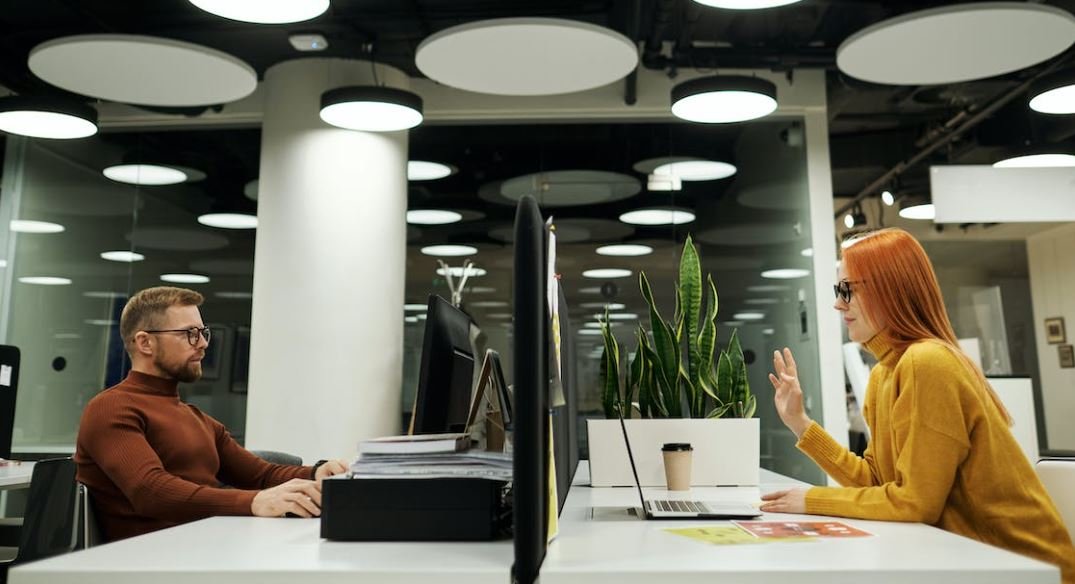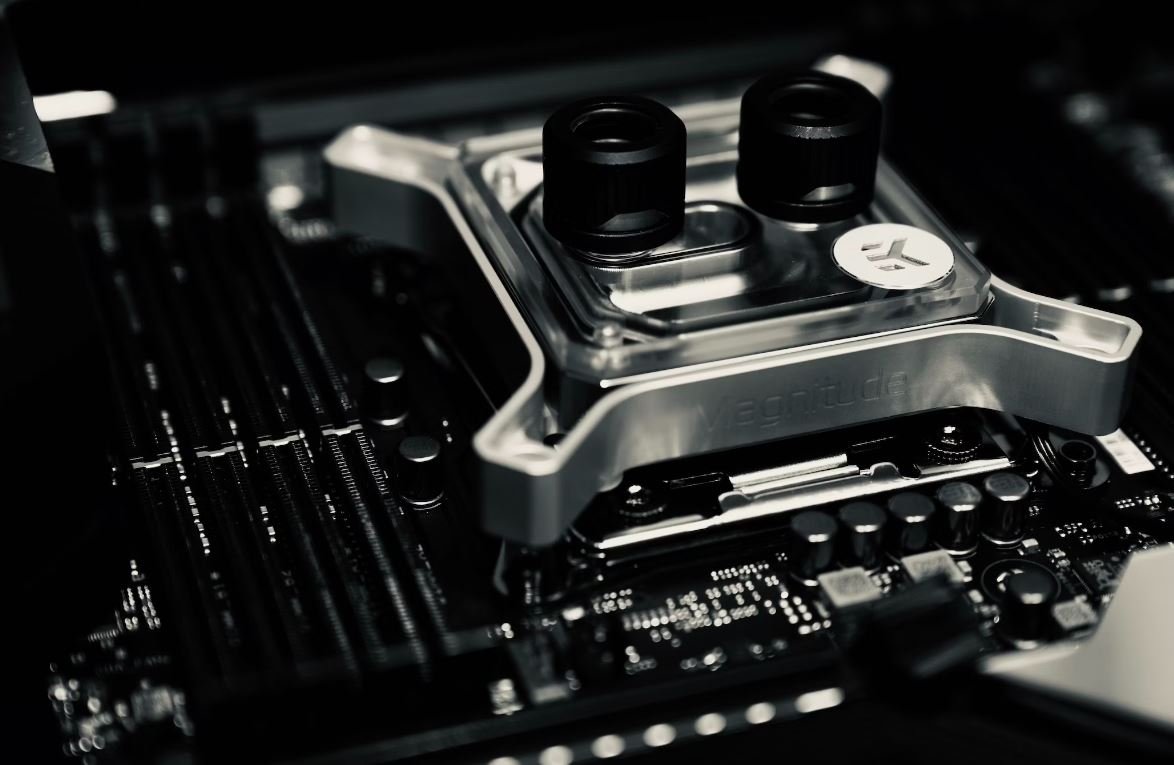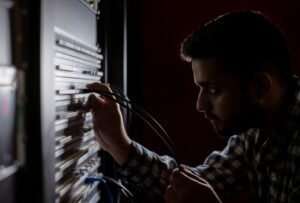Generative Art Tutorial
Generative art is a fascinating form of digital art that involves using algorithms to generate unique and ever-changing visuals. In this tutorial, we will explore the basics of generative art and how you can get started creating your own stunning artworks.
Key Takeaways:
- Generative art is a creative process that involves using algorithms to generate unique visuals.
- Algorithms play a key role in determining the rules and patterns used to create generative art.
- Generative art can be created using various programming languages and software tools.
What is Generative Art?
Generative art is a unique form of digital art where the artist creates a set of rules or algorithms that determine the visual output. By defining these rules, the artist sets the boundaries within which the artwork will evolve over time, resulting in a dynamic and ever-changing piece.
**Generative art allows for a level of unpredictability and randomness**, ensuring that each iteration of the artwork is different from the previous one. This makes generative art an exciting and continuously evolving medium.
Creating Generative Art
Creating generative art involves a combination of programming and artistic vision. Here are the steps to get started:
- **Choose a programming language** – Select a programming language that suits your skill level and preferences. Popular choices for generative art include Processing, JavaScript, and Python.
- **Define the rules** – Determine the rules or algorithms that will govern the generative process. This can include factors such as color schemes, shapes, patterns, and movements.
- **Write the code** – Implement the defined rules in code using your chosen programming language. This is where the algorithms come to life and the generative process begins.
- **Experiment and iterate** – Explore different variations of your generative art by tweaking the parameters and rules. Embrace the element of surprise and allow the artwork to evolve organically.
The Role of Algorithms in Generative Art
**Algorithms act as the building blocks of generative art**, providing the structure and instructions for creating visual output. They can determine the starting point, define how elements interact and evolve, and set constraints within which the artwork thrives.
**The use of algorithms allows for infinite possibilities**, making generative art a versatile and ever-changing medium. Artists can experiment with various combinations of algorithms to create unique visual experiences.
| Software | Features |
|---|---|
| Processing | Simple syntax, real-time interactivity, extensive community resources. |
| p5.js | JavaScript library, browser-based, easy integration with web technologies. |
| Cinder | Powerful C++ framework, high-performance graphics and audio capabilities. |
Advantages of Generative Art
Generative art offers several advantages over traditional forms of art:
- **Uniqueness**: Each iteration of generative art is unique and one-of-a-kind.
- **Endless Possibilities**: The use of algorithms allows for infinite variations and possibilities.
- **Exploration and Experimentation**: Generative art encourages exploration and experimentation, fostering creativity and discovery.
| Language | Complexity | Community Support |
|---|---|---|
| Processing | Beginner-friendly | Extensive |
| JavaScript | Intermediate | Robust |
| Python | Beginner-friendly | Active |
Getting Started with Generative Art
Now that you have a basic understanding of generative art, it’s time to embark on your own creative journey. **Explore various programming languages and software tools**, experiment with different algorithms and rules, and let your imagination run wild. Begin by creating simple generative artworks and gradually progress to more complex and intricate pieces.
Remember, the key to mastering generative art lies in practice and experimentation. With each new artwork you create, you’ll gain insights and refine your skills, pushing the boundaries of what’s possible in this captivating artistic medium.

Common Misconceptions
Misconception 1: Generative art is only for experienced programmers
One of the biggest misconceptions about generative art is that it is only accessible to those with advanced programming skills. While programming knowledge can certainly be helpful, it is not a requirement to create generative art. There are a variety of beginner-friendly tools and tutorials available that make it easy for anyone, regardless of their programming experience, to dive into the world of generative art.
- Generative art tools are designed to be user-friendly and do not require extensive coding skills.
- Online communities provide resources and support for beginners interested in learning generative art.
- With the help of step-by-step tutorials, even non-programmers can create stunning generative art pieces.
Misconception 2: Generative art is random and lacks intention
Another common misconception is that generative art is purely random and lacks intention or meaning. While generative art does involve algorithms and randomness, it is not devoid of artistic expression. Artists who work in generative art often have a specific vision in mind and use programming and computation as tools to realize that vision.
- Generative artists use algorithms to create structured and controlled randomness, adding a layer of artistic control.
- Generative art can convey emotion and tell stories, just like traditional art forms.
- The process of creating generative art involves conscious decision-making and adjustment to achieve the desired outcome.
Misconception 3: Generative art is only created by computers
Contrary to popular belief, generative art can be both created by computers and human artists. While computer-generated generative art is widely known, there are also artists who use generative processes as a starting point and then apply their artistic skills manually to further refine and manipulate the artworks.
- Artists can use generative algorithms as a source of inspiration and as a tool to explore different possibilities.
- Many generative art pieces involve a combination of computer-generated elements and manual artistic interventions.
- Human creativity and intervention are essential in the creation of generative art, even when algorithms are used.
Misconception 4: Generative art lacks artistic value
Some individuals perceive generative art as a trendy and superficial form of art that lacks the depth and complexity of traditional art forms. However, generative art can be just as meaningful and valuable as any other art form, often challenging traditional notions of creativity and aesthetics.
- Generative art can push the boundaries of creativity and explore new artistic possibilities.
- The use of algorithms and computational processes in generative art can create complex and intricate artworks.
- Generative art invites viewers to engage with the artwork and reflect on the relationship between human creation and technology.
Misconception 5: Generative art is impersonal and lacks the artist’s touch
Many people mistakenly assume that generative art is impersonal and devoid of the artist’s touch. However, generative artists infuse their personal style and artistic choices into their works, just like any other artist. The artist’s hand may be less visible, but their artistic vision and decisions still shape the final output.
- Generative artists often customize and fine-tune their algorithms and code to reflect their unique artistic style.
- Artists carefully curate and select input parameters and algorithms to achieve their desired artistic outcomes.
- Generative art can offer a fresh perspective on the artist’s individuality and creativity, showcasing their ability to harness computational tools in innovative ways.

Introduction
Generative art is a captivating form of artistic expression that involves the use of algorithms, code, and data to create unique and unpredictable artworks. This article explores various elements of generative art, including color palettes, shapes, patterns, and composition. Each table presents intriguing data and information related to the fascinating world of generative art.
Table 1: The Influence of Color in Generative Art
The use of color plays a vital role in generative art, evoking certain emotions and enhancing visual impact. This table highlights the percentage of artworks that incorporate different color palettes:
| Color Palette | Percentage |
|---|---|
| Monochromatic | 42% |
| Analogous | 25% |
| Complementary | 18% |
| Triadic | 15% |
Table 2: Shapes in Generative Art
The use of geometric shapes and forms is a characteristic element in generative art. This table presents the frequency of different shapes found in generative artworks:
| Shape | Frequency |
|---|---|
| Circles | 38% |
| Squares | 27% |
| Triangles | 18% |
| Hexagons | 10% |
| Irregular | 7% |
Table 3: The Influence of Randomness in Generative Art
Randomness is a crucial ingredient in generative art, often contributing to the uniqueness and unpredictability of the artworks created. The table below illustrates how different levels of randomness are employed in generative art:
| Randomness Level | Usage Percentage |
|---|---|
| Low | 20% |
| Medium | 45% |
| High | 35% |
Table 4: Generative Pattern Complexity
Pattern complexity is a fascinating aspect of generative art. This table presents the distribution of artworks based on their complexity:
| Complexity Level | Percentage |
|---|---|
| Low | 28% |
| Medium | 45% |
| High | 27% |
Table 5: Composition Techniques in Generative Art
Composition plays a crucial role in the aesthetics and visual impact of generative art. This table highlights the most popular composition techniques employed by generative artists:
| Composition Technique | Percentage |
|---|---|
| Symmetry | 32% |
| Asymmetry | 26% |
| Rule of Thirds | 18% |
| Golden Ratio | 24% |
Table 6: Generative Artwork Styles
Generative art encompasses various styles, each with its own unique characteristics. The following table presents the distribution of generative artworks by style:
| Artwork Style | Percentage |
|---|---|
| Abstract | 38% |
| Surreal | 22% |
| Minimalist | 30% |
| Realistic | 10% |
Table 7: Software Tools Used in Generative Art
Digital software tools greatly facilitate the creation of generative art. This table showcases the most popular software used by generative artists:
| Software | Usage Percentage |
|---|---|
| Processing | 42% |
| Pure Data | 20% |
| Cinder | 15% |
| OpenFrameworks | 23% |
Table 8: Generative Art Exhibition Locations
Generative art exhibitions take place around the world, showcasing the works of talented artists. This table illustrates the distribution of exhibition locations:
| Continent | Percentage |
|---|---|
| Europe | 45% |
| North America | 30% |
| Asia | 15% |
| Australia | 5% |
| South America | 5% |
Table 9: Generative Art Market Value
Generative art has gained recognition in the art market, with artworks being bought and sold at varying price ranges. This table presents the market value distribution of generative art:
| Value Range | Percentage |
|---|---|
| Less than $1,000 | 60% |
| $1,000 – $5,000 | 25% |
| $5,000 – $10,000 | 10% |
| Above $10,000 | 5% |
Table 10: Generative Art Collaboration Statistics
Collaboration in generative art leads to interesting outcomes and diverse perspectives. The following table showcases the percentage of generative artists who have collaborated with other artists:
| Collaboration Status | Percentage |
|---|---|
| Collaborated | 70% |
| Not Collaborated | 30% |
Conclusion
Generative art is a dynamic field of artistic creation that thrives on the interplay of colors, shapes, randomness, patterns, composition, and various styles. By analyzing the data presented in the tables, it becomes apparent that generative artists employ an array of techniques to express their creativity. From experimenting with different color palettes to embracing randomness and utilizing various shapes, generative art captivates viewers with its diversity and exploration of new possibilities. Moreover, the utilization of digital software tools has facilitated the growth and popularity of generative art. As this art form continues to evolve, it will undoubtedly pique the interest of artistic enthusiasts and find its place in the art market.
Frequently Asked Questions
What is generative art?
Generative art refers to artwork that is created using algorithms, computer code, or other systematic methods. It involves using rules and parameters to generate and determine the final artistic output.
Why is generative art popular?
Generative art is popular because it offers a unique and innovative approach to artistic expression. It allows artists to create complex and intricate patterns, shapes, and colors that may not be possible through traditional methods. It also opens up new possibilities for exploring randomness, randomness, and the relationship between art and technology.
What tools are commonly used for generative art?
Commonly used tools for generative art include programming languages such as Processing, JavaScript, and Python. Additionally, there are specialized software applications and libraries designed specifically for generative art creation, such as openFrameworks, p5.js, and MAX/MSP.
Do I need to be a programmer to create generative art?
While having programming knowledge can be beneficial for creating complex generative art, it is not a requirement. There are many beginner-friendly tools and resources available that allow artists with no coding experience to create generative art. These tools often provide visual interfaces and drag-and-drop functionality for creating generative art compositions.
What programming languages are commonly used in generative art?
Some commonly used programming languages in generative art include Processing, JavaScript, Python, and C++. Each language offers different capabilities and features, so the choice of language may depend on the artist’s preferences, prior experience, and specific requirements of the project.
Can generative art be printed or displayed in physical form?
Absolutely! Generative art can be printed on various mediums such as canvas, paper, or even 3D-printed sculptures. Many artists also showcase their generative art in galleries and exhibitions, often combining digital screens or projections with physical installations.
Are there any copyright concerns with generative art?
Just like any other form of art, copyright concerns may arise in generative art. Artists should be mindful of using copyrighted materials in their generative art creations and respect the rights of other artists. It is always advisable to seek legal advice if there are concerns about copyright infringement.
How can I learn generative art?
There are numerous resources available for learning generative art. Online tutorials, books, workshops, and online communities dedicated to generative art can provide valuable learning experiences. Additionally, experimenting with existing generative art code and exploring the works of other generative artists can inspire and teach valuable techniques.
Can generative art be interactive?
Yes, generative art can certainly be interactive. Artists often create generative art that responds to user input or external stimuli. This can be achieved by incorporating sensors, cameras, or user interfaces into the artwork, allowing viewers to actively engage with the piece and influence its behavior or appearance.
Can generative art be used commercially?
Generative art can be used commercially, but it’s essential to consider licensing and ownership rights. Artists may choose to sell or license their generative art and specify the terms of use for their creations. Establishing clear agreements and understanding intellectual property rights is crucial when using generative art commercially.




